Morris Canal was built to transport coal from the Lehigh Valley of Pennsylvania to industrial markets in Newark and New York. The total length of the canal was 106 miles. The canal climbed an astonishing 914 feet from Newark Bay to the summit at Lake Hopatcong, and then dropped 760 feet to the Delaware River at Phillipsburg. This gave the canal an average vertical slope of 18 feet per mile, steep compared to the contemporary Erie Canal's relatively gentle slope of one foot per mile.
1979
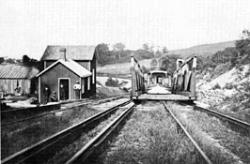
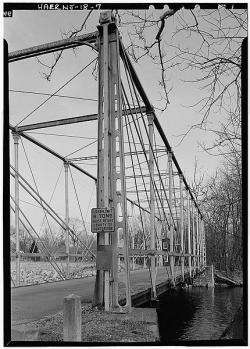
"Fink's truss design was one of a number of early patented solutions to [the problem of how] to carry a massive, moving weight (a train) over long spans (to avoid the expense of building piers and obstructing waterways) on easily erected bridges (often in rough terrain) with good long-term economy..."
- Kent Farnow Smith, "America's Oldest Functioning Iron-Truss Bridge," 1978
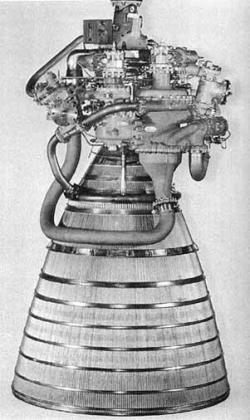
The RL-10, which served as the power plant for NASA's upper-stage Centaur space launch vehicle, was the first rocket engine to use high-energy liquid hydrogen as a fuel. It has provided precisely controlled, reliable power for lunar and planetary explorations. The RL-10 embodied numerous advanced design features, including multiple use of its fuel with the "bootstrap cycle." The RL-10 is also capable of multiple restarts in space, which enables positioning of satellites or further escape of Earth's gravity.
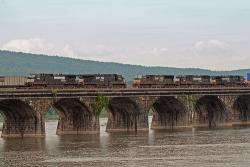
The third bridge built on the same site to carry railroad tracks across the Susquehanna River just north of Harrisburg, Pennsylvania, the Rockville Stone Arch Bridge, at 3,820 feet long and 52 feet wide, is believed to be the longest and widest stone-arch railroad bridge in the world. A central link in rail travel between New York City and Pittsburgh, the Rockville Stone Arch Bridge accommodates four lines of railroad tracks, today serving both the Norfolk Southern and Amtrak lines.
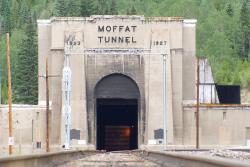
Known as "the highest and lowest holing in history," the tunnel bored through the Rockies at an elevation of 9,200 feet, 2,800 feet below the surface. Eight hundred men worked around the clock for 3 1/2 years, moving 3 billion pounds of rock.
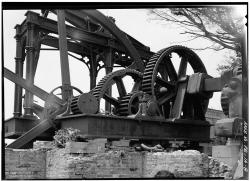
The La Esperanza sugar mill steam engine is one of the few remaining American links to the pioneer beam engines of the English inventors Thomas Newcomen (1712) and James Watt (1769). The engine was built in 1861 in Cold Spring, New York, by the West Point Foundry. The general arrangement and details, including the Gothic embellishment, are typical of machinery of the period. The straight-line motion of the piston rod is accommodated to the arc of the moving beam end by a parallel motion. Watt regarded this ingenious linkage as the invention of which he was most proud.

The Fink Deck Truss Bridge is thought to have been originally used on the Norfolk and Western mainline railway. It was moved to its present location and converted to a vehicular bridge over a railroad spur in 1893 when the Norfolk and Western mainline was moved. It was relocated again in 1985 to Lynchburg's Riverside Park to serve as a pedestrian bridge.
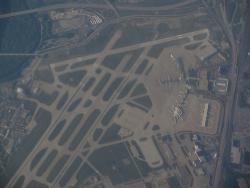
Constructed on 1,040 acres just 10 miles southwest of the city center, the Cleveland Hopkins Airport was the first major airport in the world to provide an integrated system of paved landing surfaces, lighted runways, and a terminal complex consisting of hangars and operating facilities. Overseen by city manager William Hopkins and Major "Jack" Berry - an engineer on loan from the U.S. postal service who eventually became the city's first Airport Commissioner - the project at first was called "Major Berry's Folly" by local residents because of its outlying location.
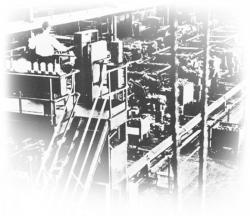
In 1899, during the earliest days of the automobile revolution, A. O. Smith developed a new, lightweight steel car frame. Within a few short years, he was selling these frames to a “who’s who” of car makers including Cadillac, Oldsmobile, and Ford. A. O. Smith’s son, Lloyd Raymond, carried on the family company, expanding the automotive business and introducing the world’s first automated frame production line, the Mechanical Marvel.
Innovations

In 1899, during the earliest days of the automobile revolution, A. O. Smith developed a new, lightweight steel car frame. Within a few short years, he was selling these frames to a “who’s who” of car makers including Cadillac, Oldsmobile, and Ford. A. O. Smith’s son, Lloyd Raymond, carried on…
Read More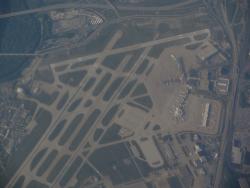
Constructed on 1,040 acres just 10 miles southwest of the city center, the Cleveland Hopkins Airport was the first major airport in the world to provide an integrated system of paved landing surfaces, lighted runways, and a terminal complex consisting of hangars and operating facilities.…
Read More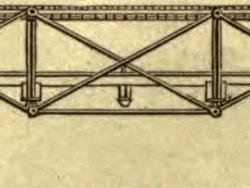
The Fink Deck Truss Bridge is thought to have been originally used on the Norfolk and Western mainline railway. It was moved to its present location and converted to a vehicular bridge over a railroad spur in 1893 when the Norfolk and Western mainline was moved. It was relocated again in 1985 to…
Read More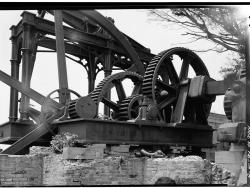
The La Esperanza sugar mill steam engine is one of the few remaining American links to the pioneer beam engines of the English inventors Thomas Newcomen (1712) and James Watt (1769). The engine was built in 1861 in Cold Spring, New York, by the West Point Foundry. The general arrangement and…
Read More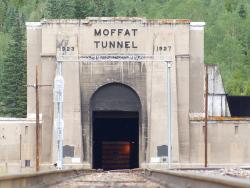
Known as "the highest and lowest holing in history," the tunnel bored through the Rockies at an elevation of 9,200 feet, 2,800 feet below the surface. Eight hundred men worked around the clock for 3 1/2 years, moving 3 billion pounds of rock.
Three thousand feet under the Continental…
Read More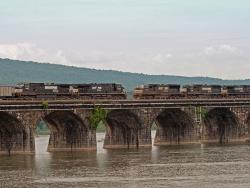
The third bridge built on the same site to carry railroad tracks across the Susquehanna River just north of Harrisburg, Pennsylvania, the Rockville Stone Arch Bridge, at 3,820 feet long and 52 feet wide, is believed to be the longest and widest stone-arch railroad bridge in the world. A central…
Read More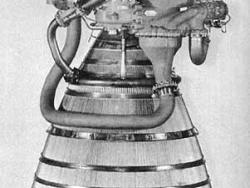
The RL-10, which served as the power plant for NASA's upper-stage Centaur space launch vehicle, was the first rocket engine to use high-energy liquid hydrogen as a fuel. It has provided precisely controlled, reliable power for lunar and planetary explorations. The RL-10 embodied numerous…
Read More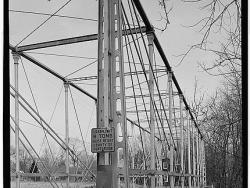
"Fink's truss design was one of a number of early patented solutions to [the problem of how] to carry a massive, moving weight (a train) over long spans (to avoid the expense of building piers and obstructing waterways) on easily erected bridges (often in rough terrain) with good long-term…
Read More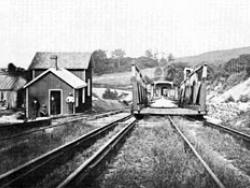
Morris Canal was built to transport coal from the Lehigh Valley of Pennsylvania to industrial markets in Newark and New York. The total length of the canal was 106 miles. The canal climbed an astonishing 914 feet from Newark Bay to the summit at Lake Hopatcong, and then dropped 760 feet to the…
Read More

